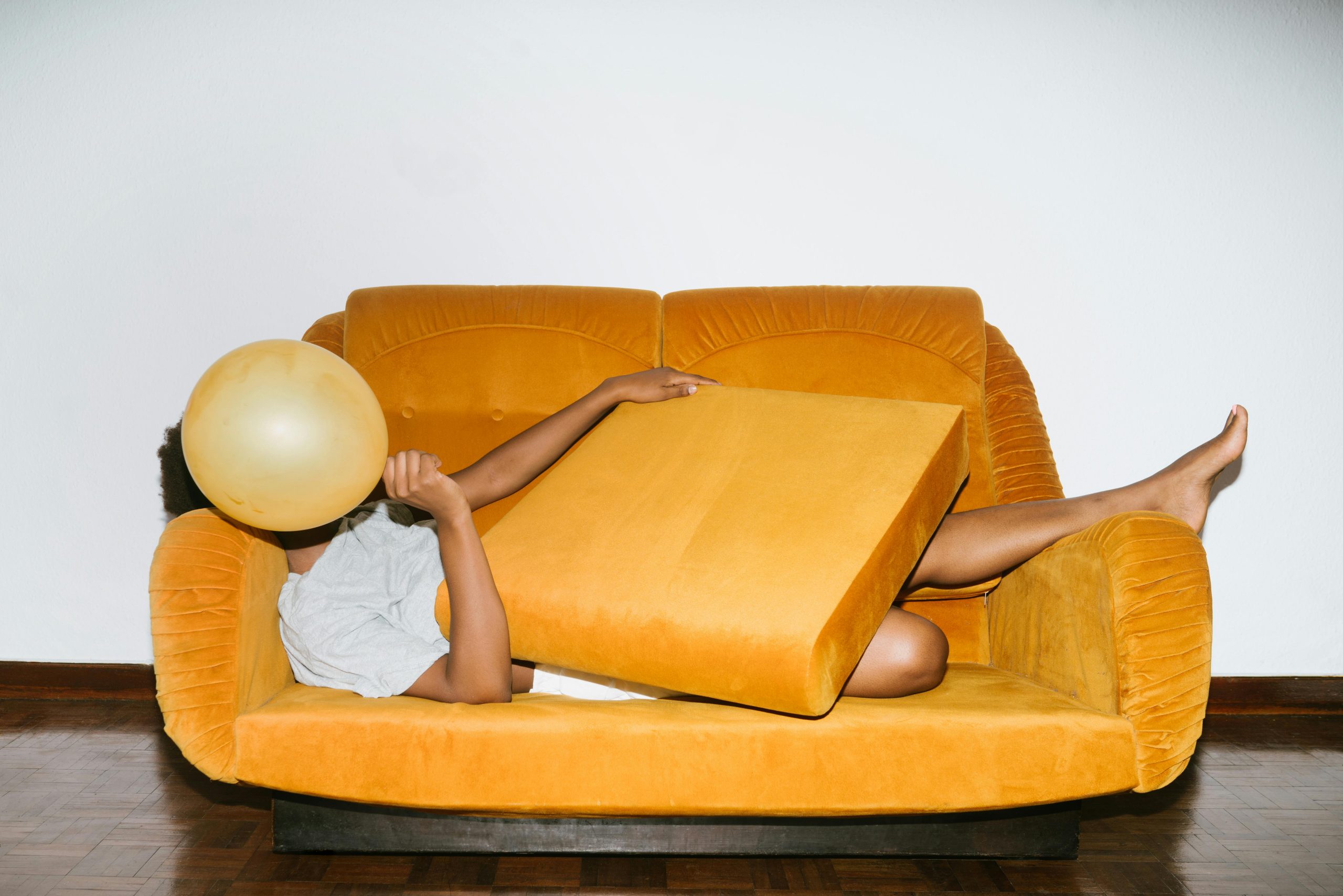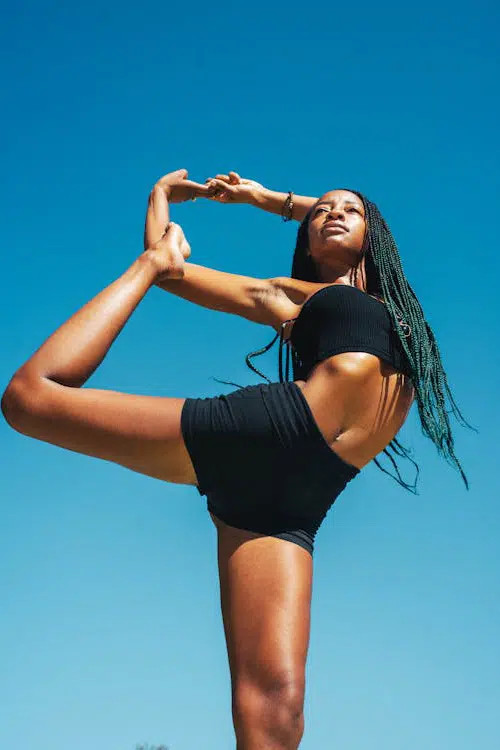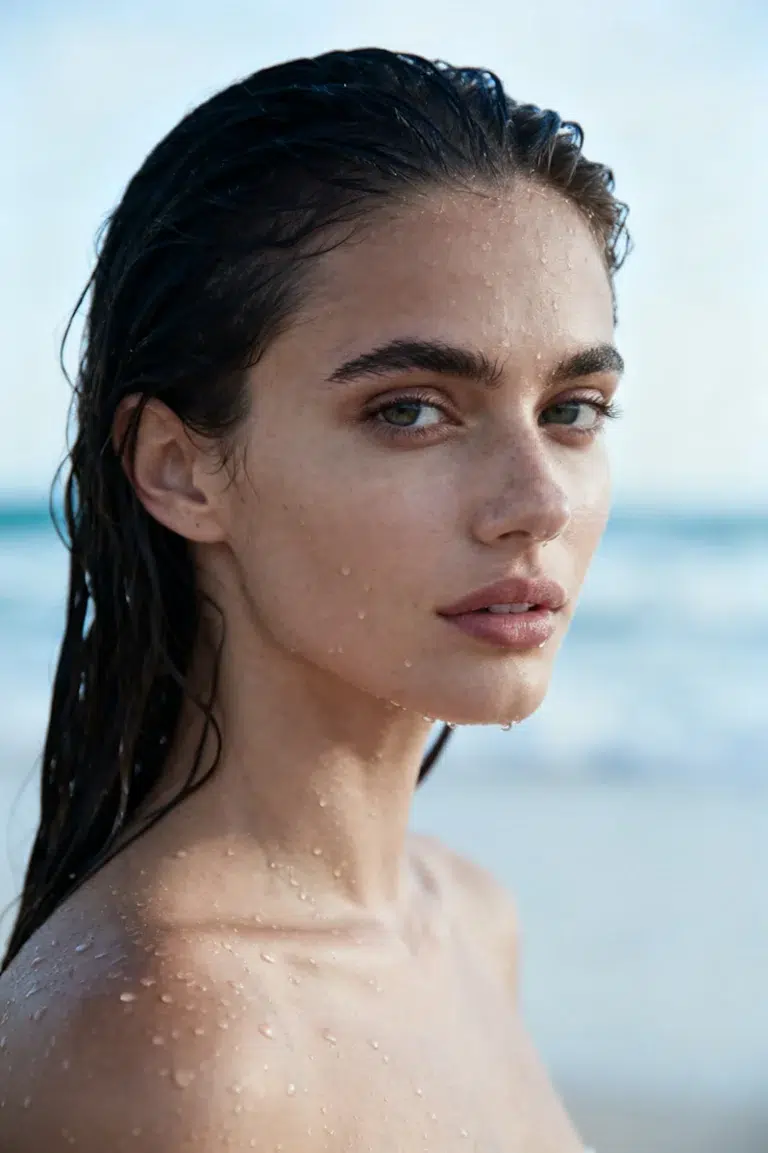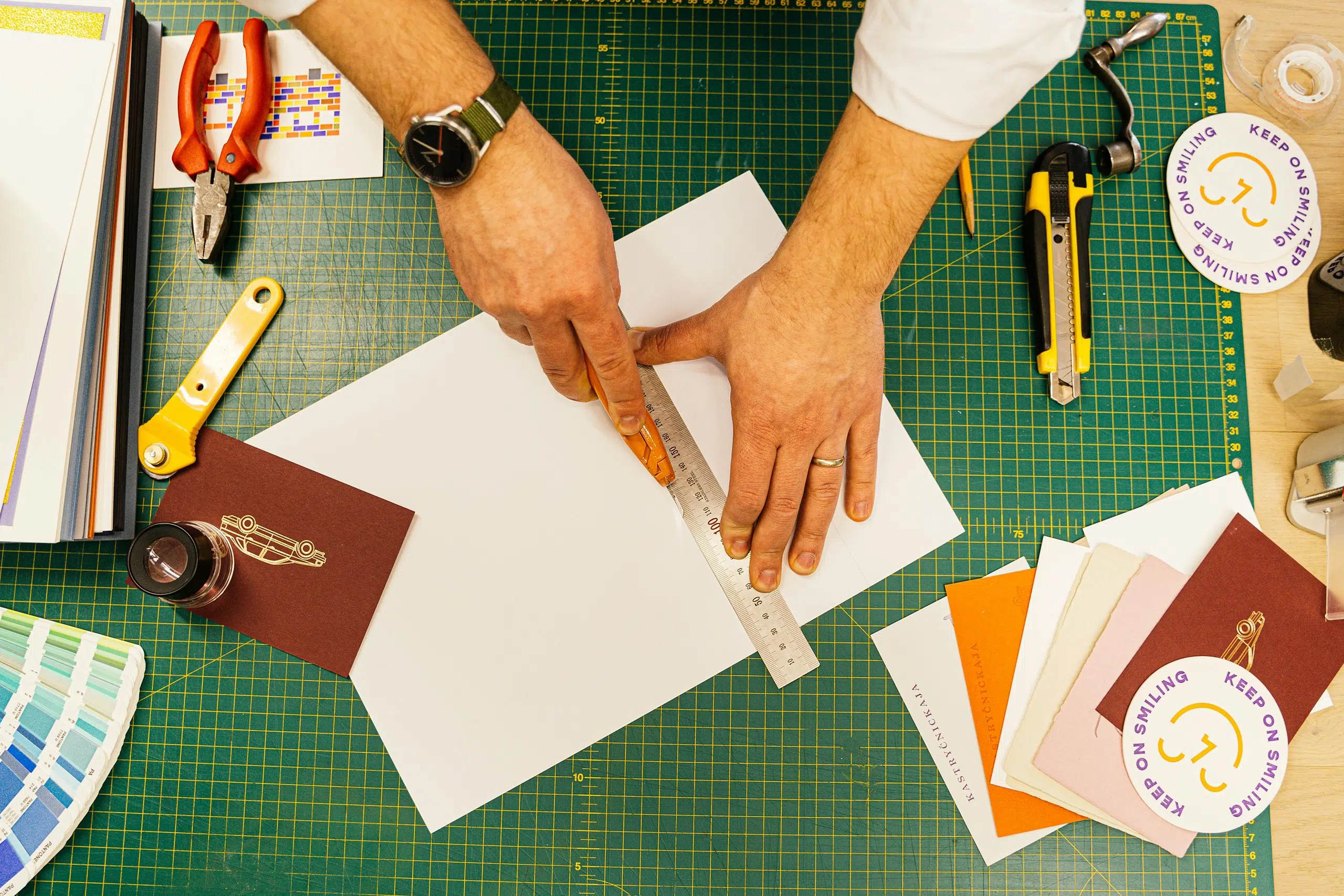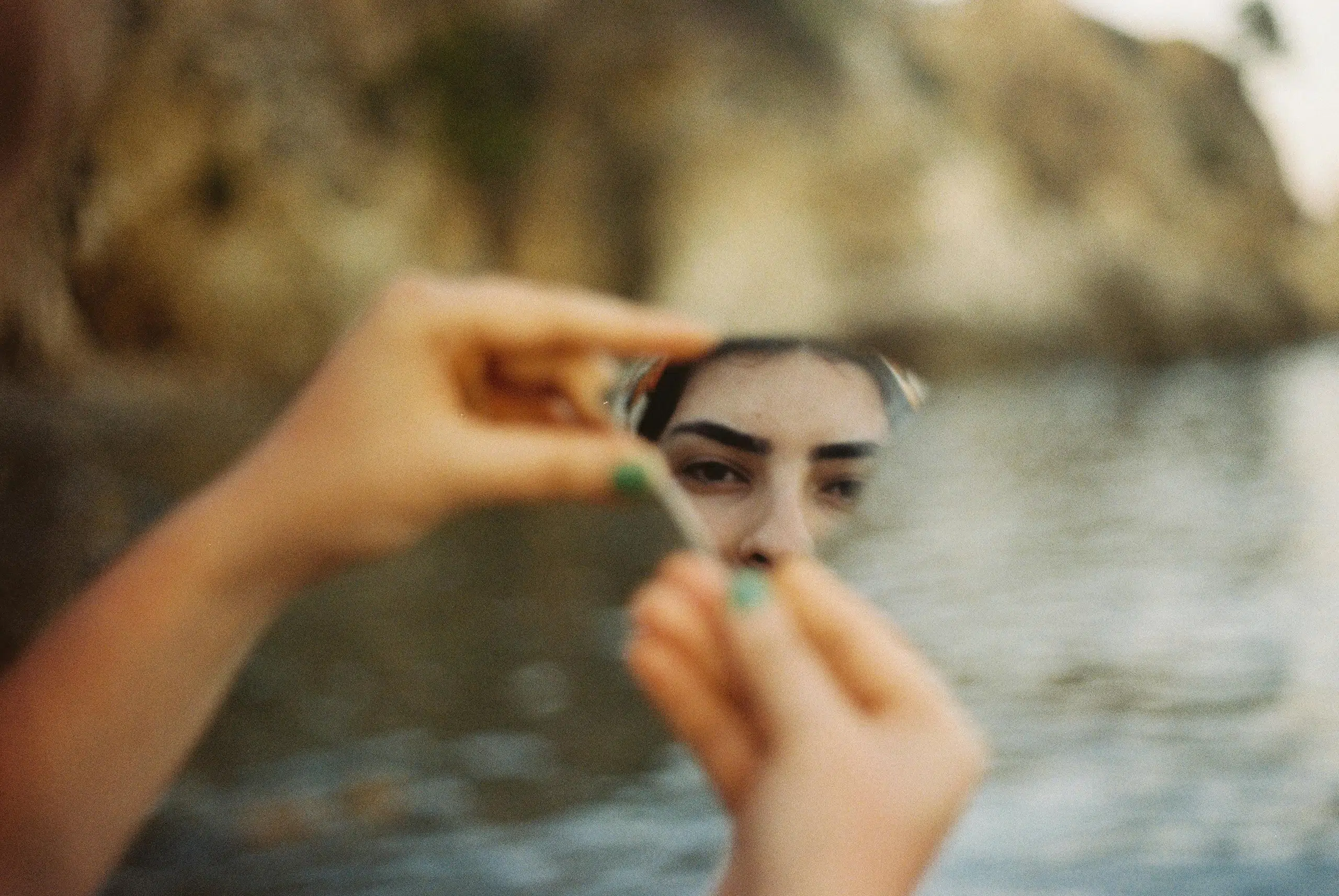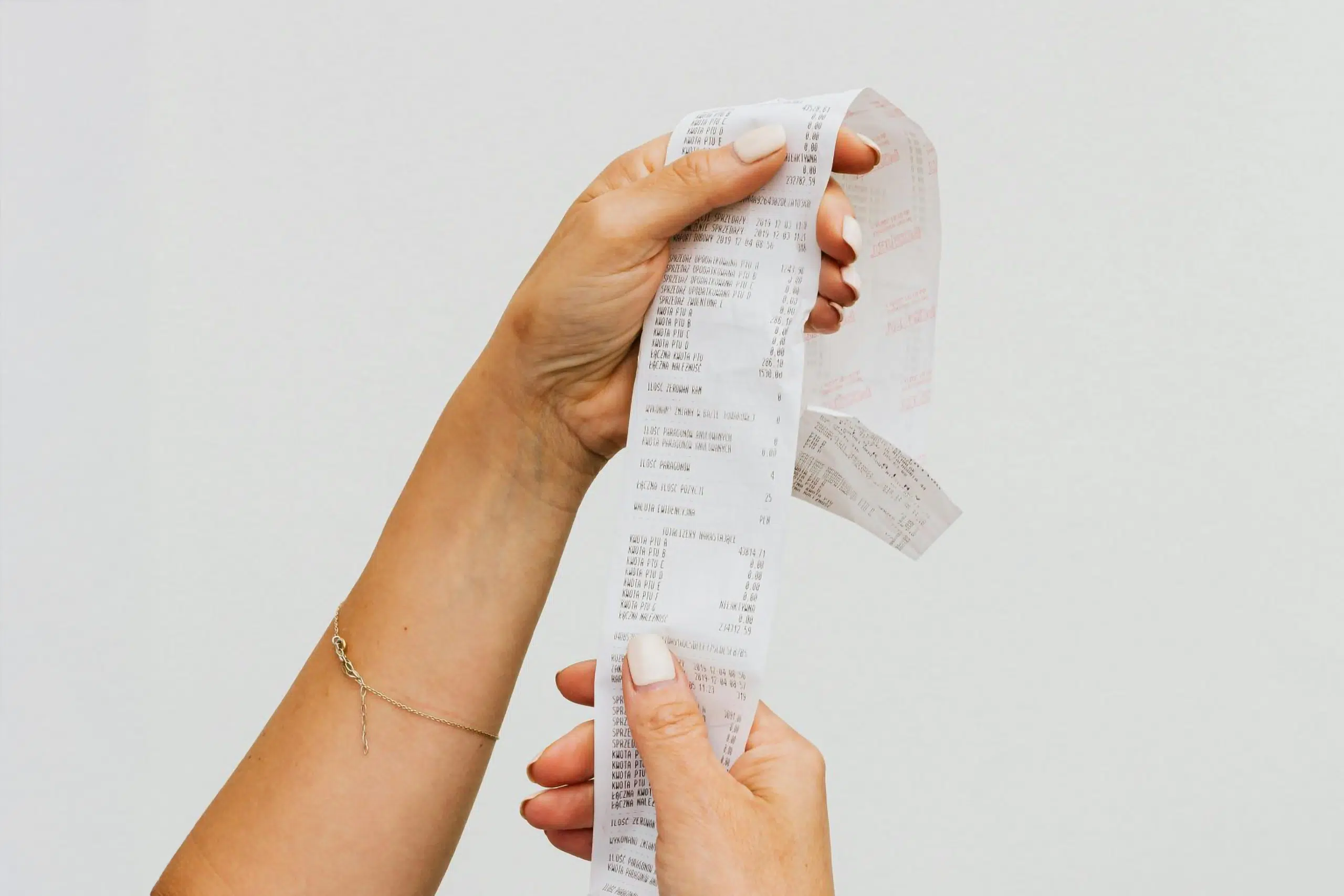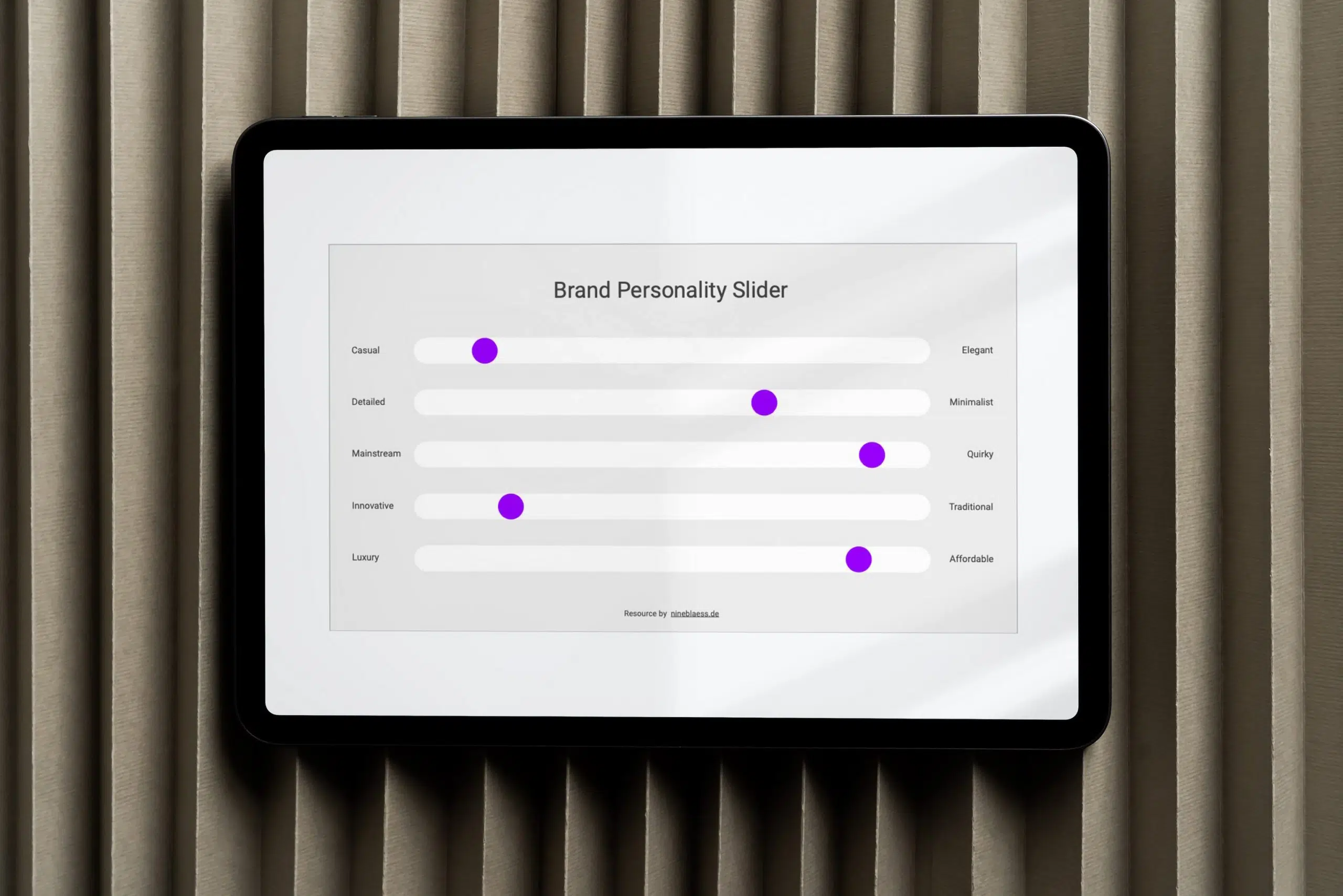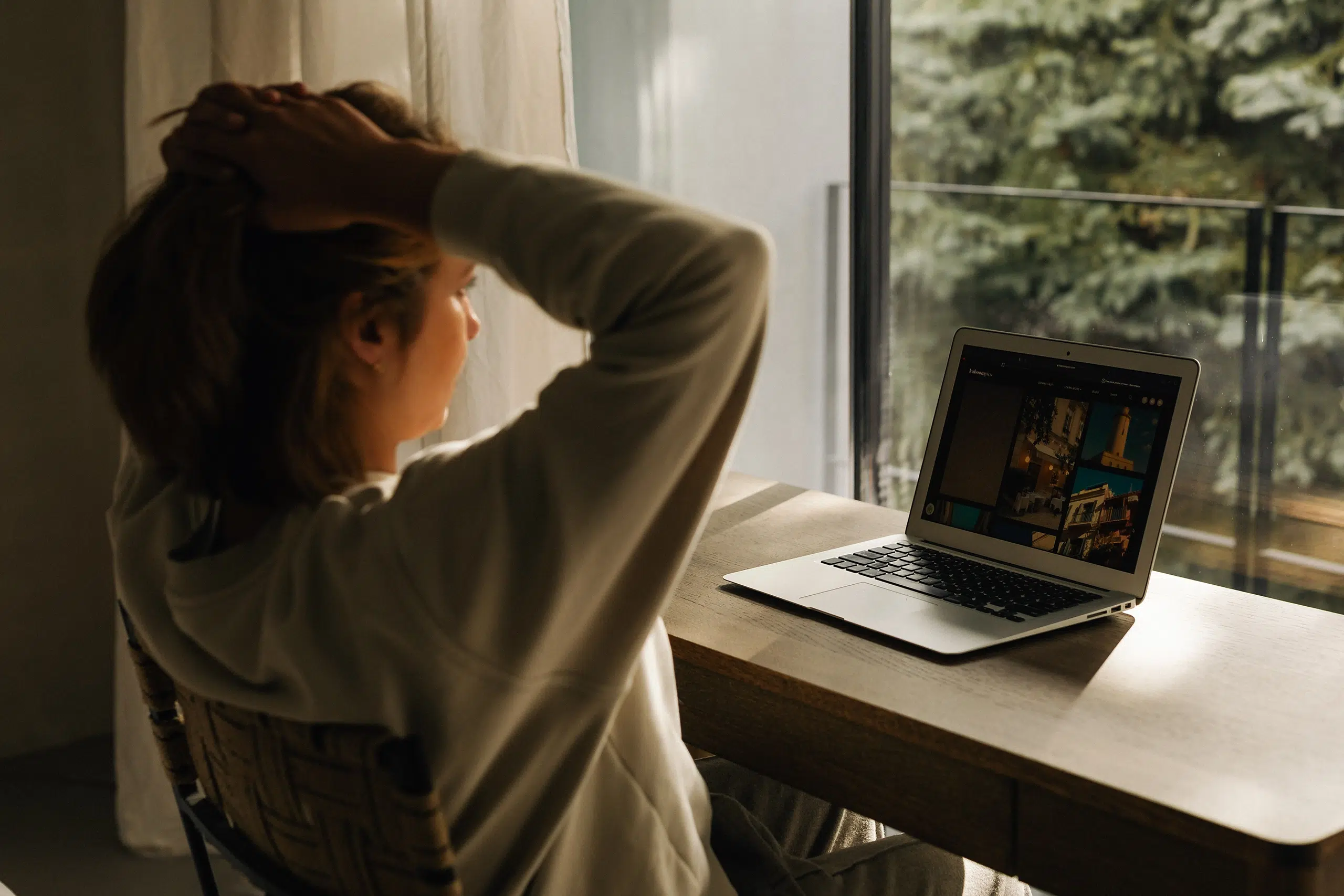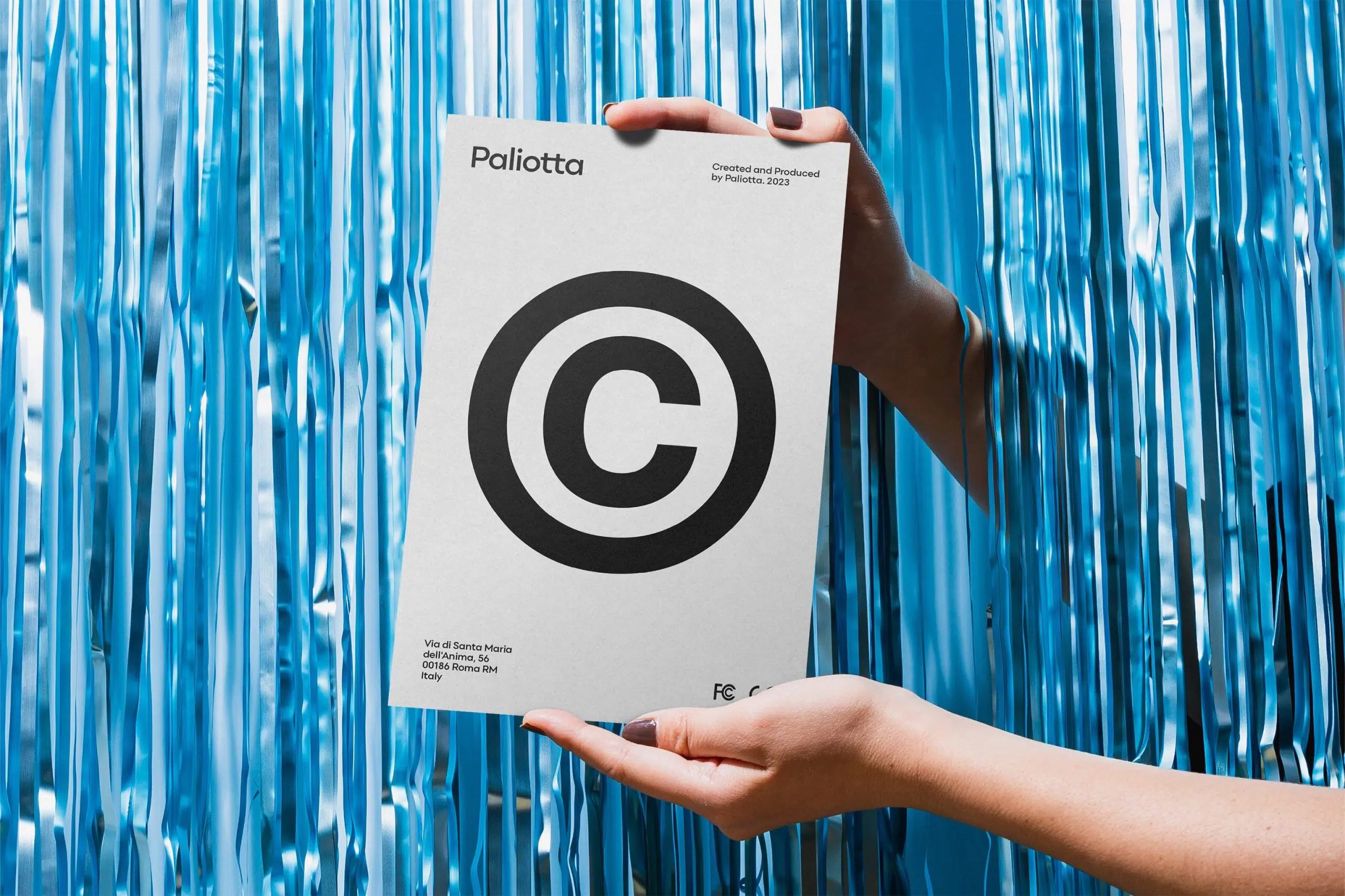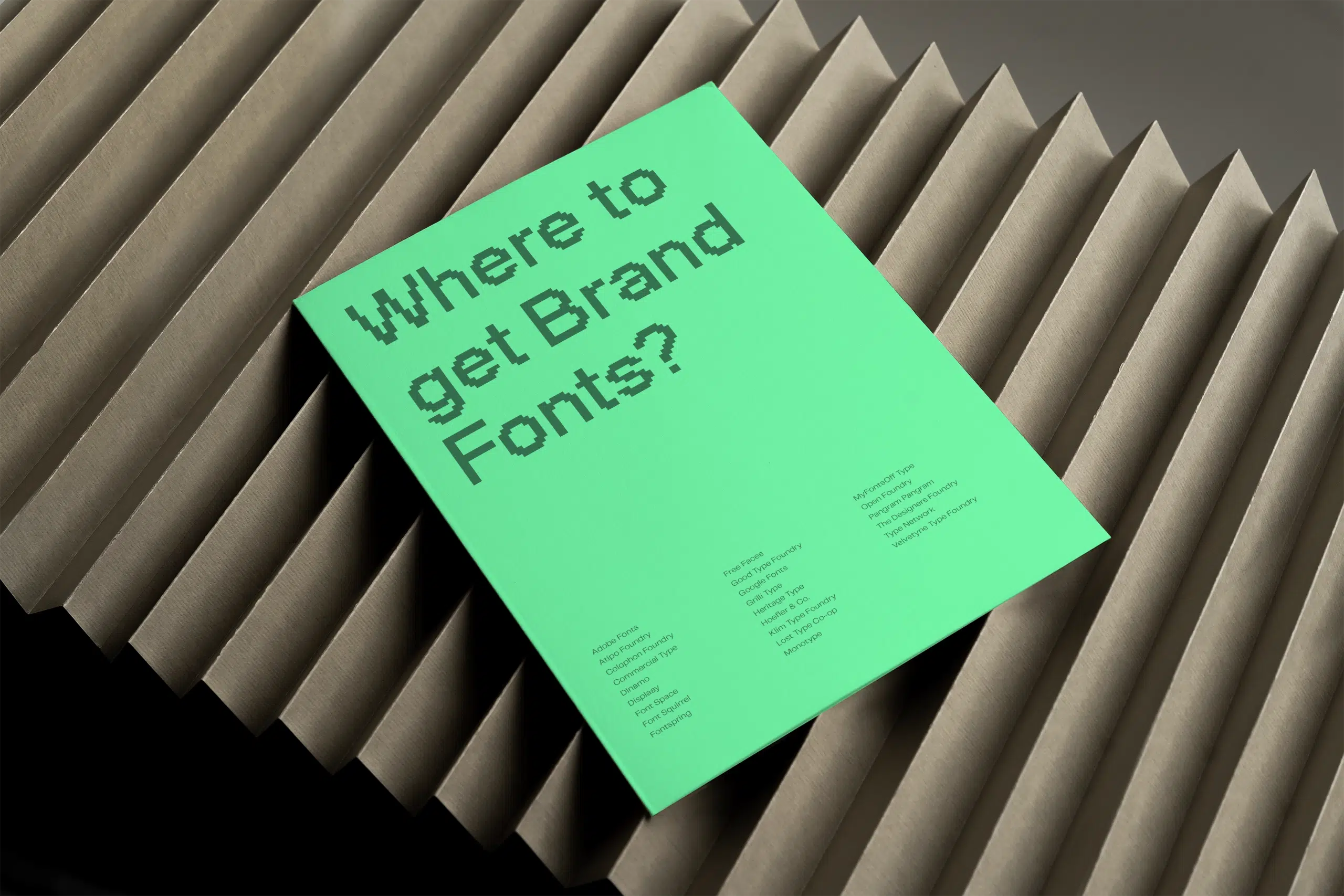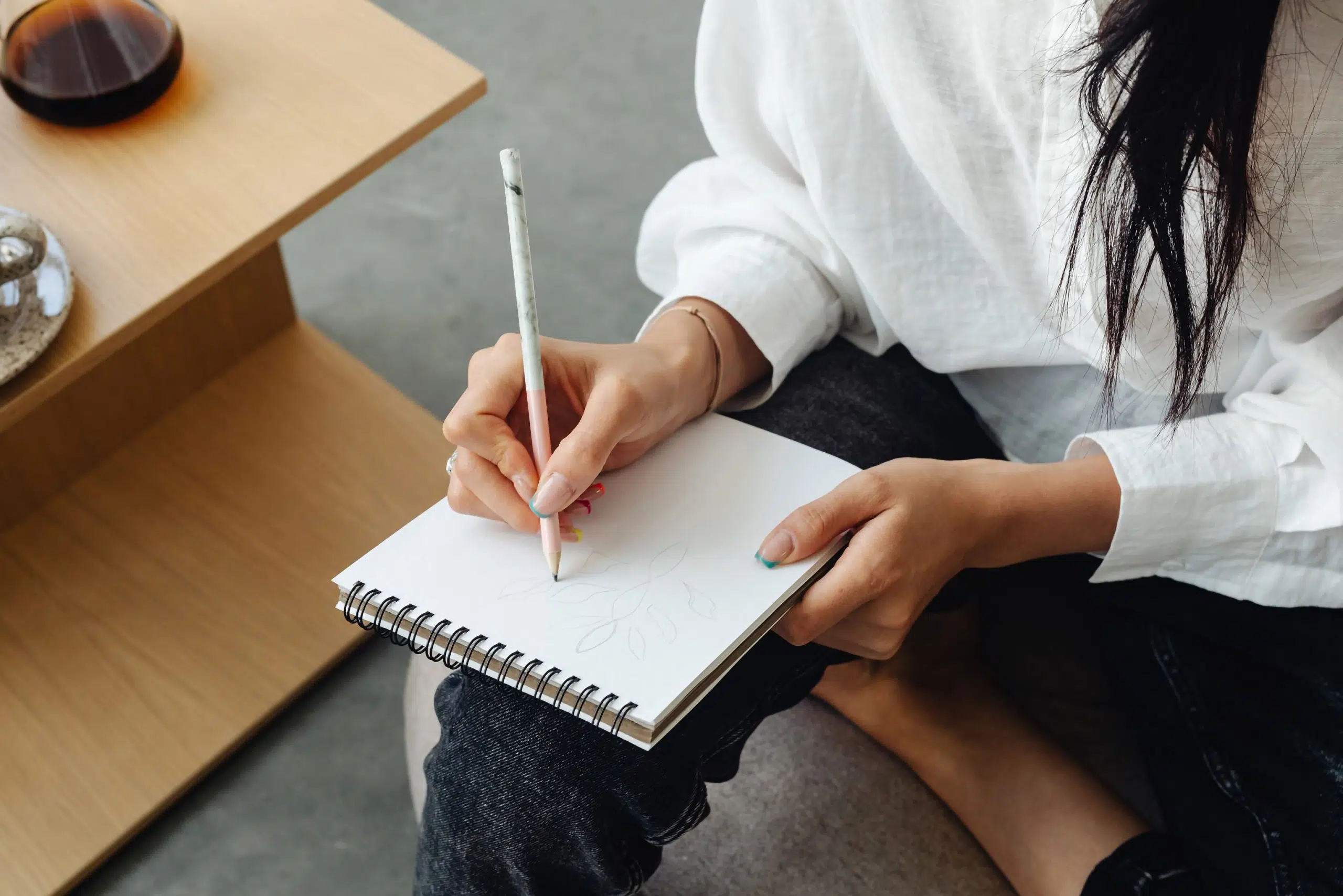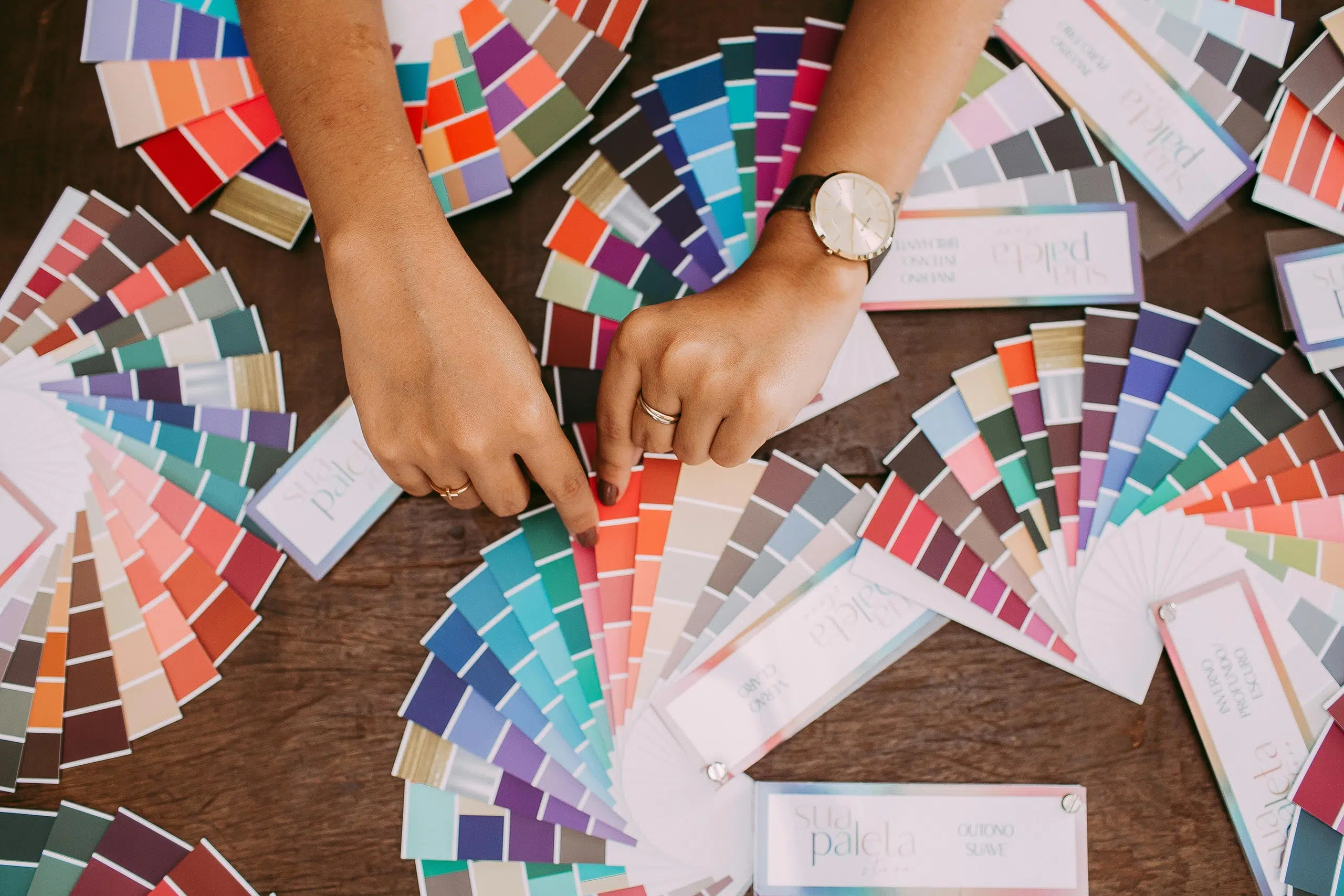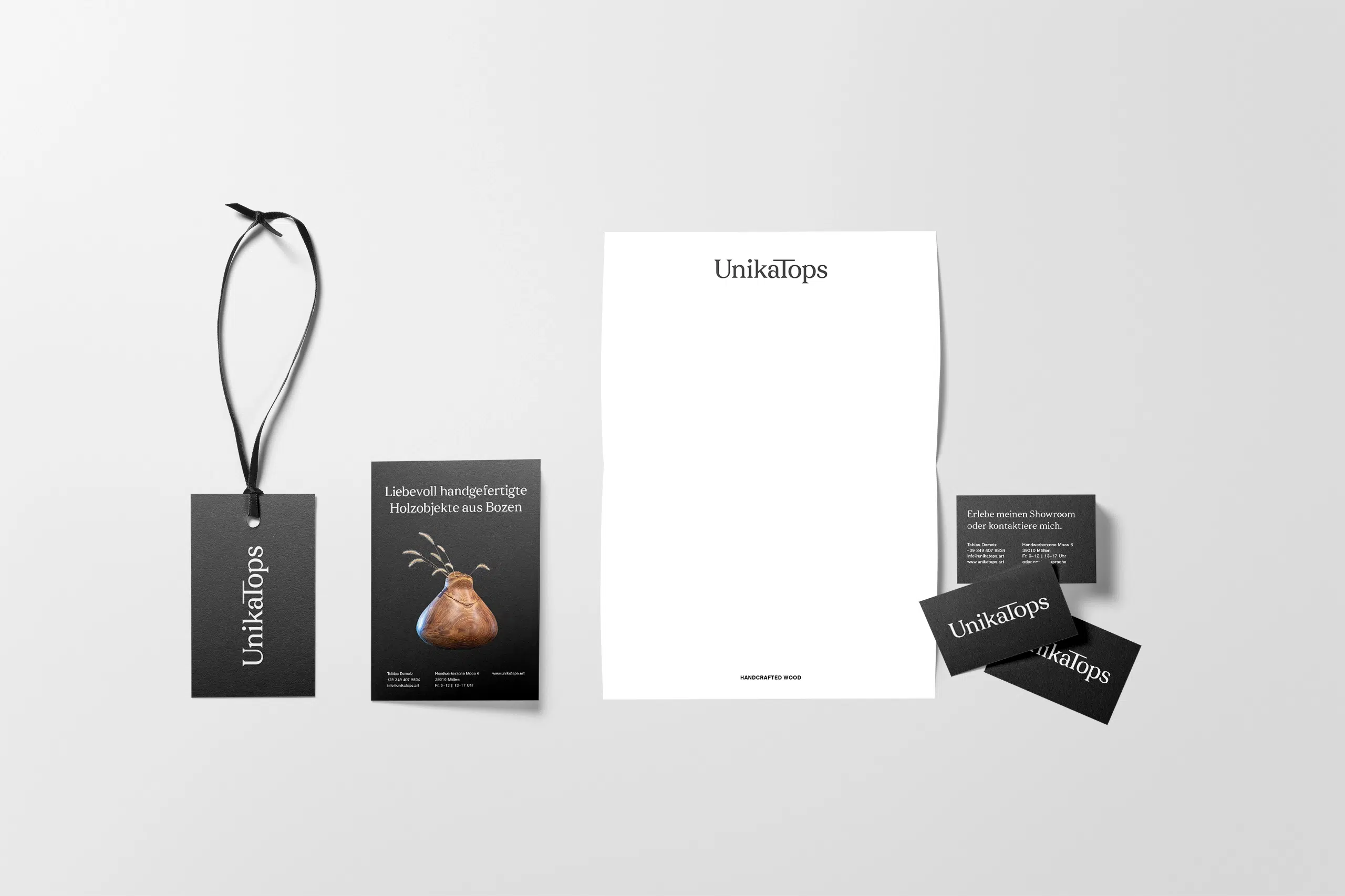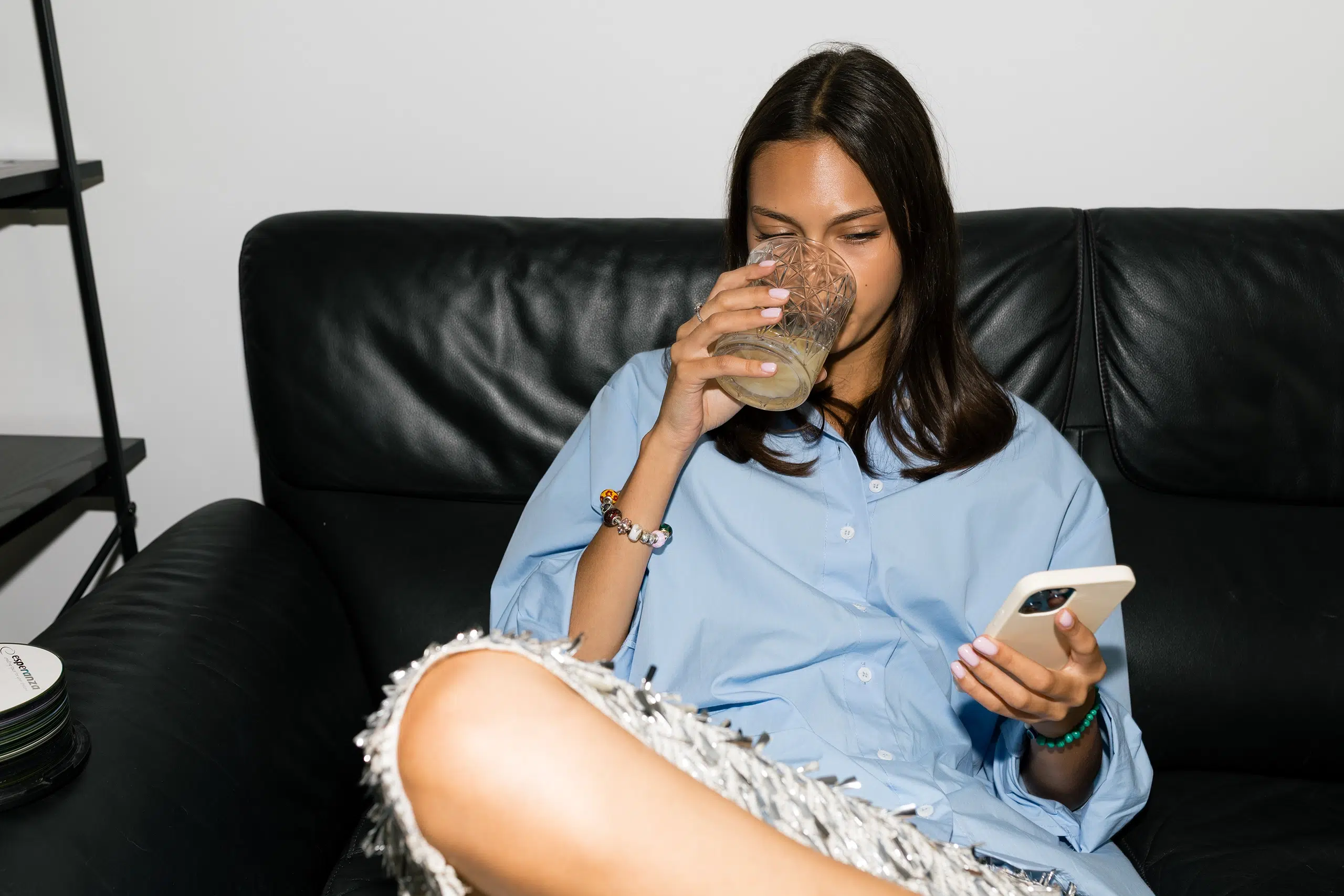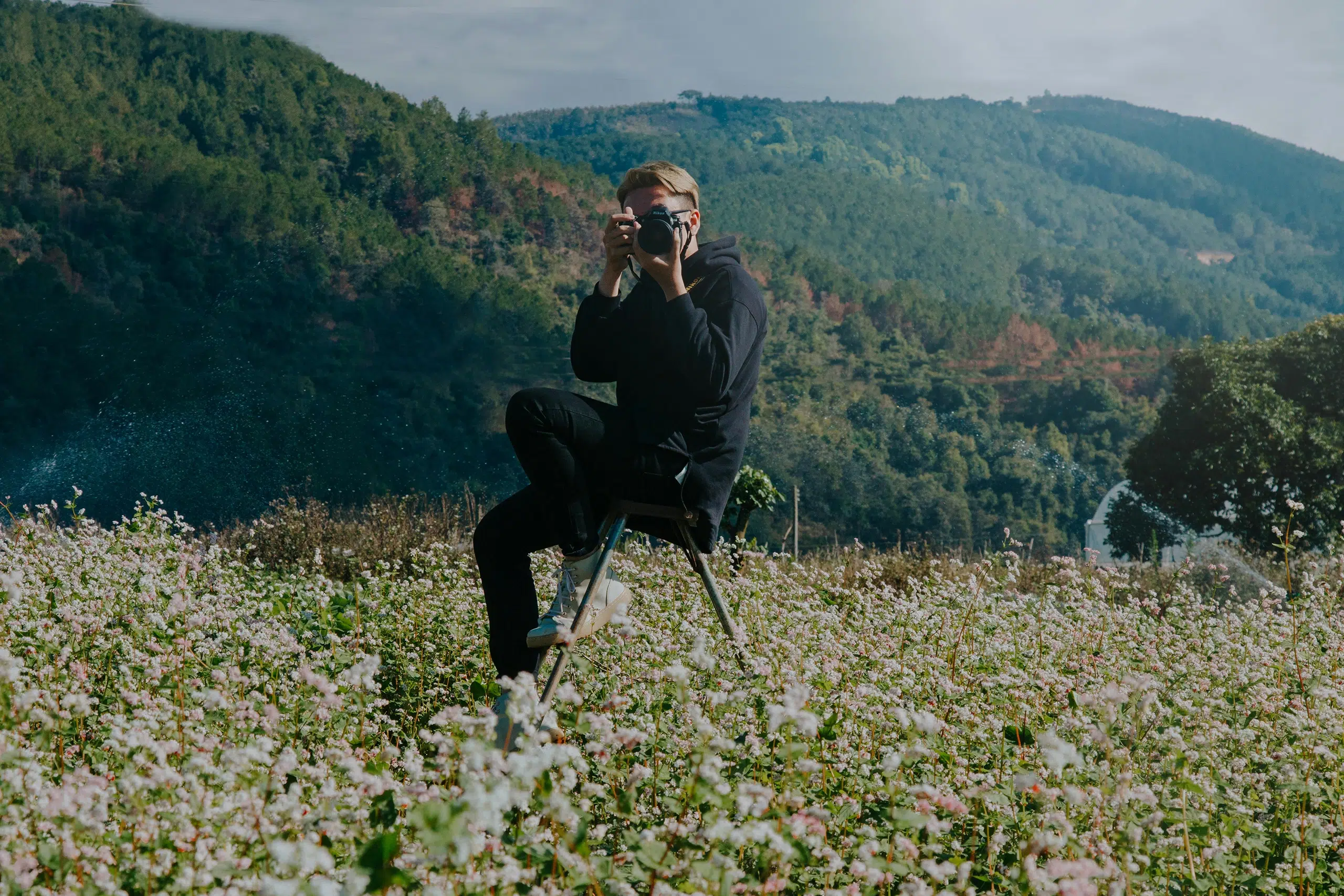Yet, people decide if they like your brand in a split second, often before reading a single word. Your images help set that first impression. If they look generic, your brand will too. One study even found that people simply ignore generic stock photos.
In a perfect world, you’d use your own photos. That’s what people want to see, especially younger audiences. They’re looking for real people, not staged ads. In fact, 82% of Gen Z say they trust brands more when they see real people in the visuals, not models or stock clichés.
But let’s be honest. Not everyone has the budget, time, or resources for a professional photo shoot. That’s why so many brands turn to stock photos.
But, to be honest, not every brand has the budget, time or resources for regular photo shoots. This is why so many turn to stock photos.
The problem is, most stock photo sites focus on quantity over quality. You’ll find millions of images, but only a few that tell a story, feel premium or look authentic.
And that’s exactly where this guide comes in. I’ll show you the best stock photo sites that look modern, work for brands and are still affordable.
What to look for in stock photos as a brand
Before we get to the websites, let’s take a quick look at what really matters when choosing stock photos. That way, you’ll know what to look for and get more out of these sites.
Many pick photos just because they look nice. But strong brands are more intentional—they build a visual world on purpose.
Your photos are just as much a part of your branding as your logo, brand colours, brand fonts, and brand voice. They help people understand who you are and what you stand for.
Here’s what to pay attention to when choosing stock photos:
1. Brand fit
The most beautiful image is useless if it doesn’t fit your brand. Your visuals should reflect your brand’s personality and support your message.
Ask yourself for every photo:
- Does it align with my brand values and tone of voice?
- Does it trigger the emotion I want?
- Does it speak to my audience?
- Does it help differentiate my brand?
If you have brand guidelines, check whether the image fits your defined mood, colour direction, composition and style. If not, trust your gut. If something feels off, don’t use it.
2. Consistency
When all your visuals follow a clear style, your brand becomes more recognisable and memorable.
In fact, consistent visuals make your brand three to four times more visible, more professional, and more trustworthy. Some studies even show brands with consistent representation can boost their revenue by up to 23%.
Consistency doesn’t mean using the same motif over and over. It means your images feel like they belong together—for example through:
- Consistent editing style (grain, texture, colour grading)
- Similar lighting
- Recurring perspectives or compositions
- A defined atmosphere (warm, minimal, natural, etc.)
- Consistent contrast and sharpness
- Intentional cropping
- Recurring backgrounds or props
3. Authenticity
People want brands that feel human—especially today, where so much in our world feels automated and artificial. 90% of consumers said they’re looking for authenticity when deciding what brands they’ll support.
But what counts as “authentic” will look different for every brand. For some, it’s a raw, documentary style. For others, it may be minimal and clean.
What matters is cohesion. Your images should feel honest, intentional and true to your brand, without copying others.
4. Diversity
Inclusive imagery helps more people feel seen and connected to your brand. It builds closeness and loyalty. But diversity shouldn’t look forced or superficial. It only works when it feels natural and aligned with your brand world.
You might want to look for:
- A mix of ages, ethnicities, body types, abilities and genders (while avoiding clichés and stereotypes)
- Realistic scenes that don’t look staged
- A visual reflection of your audience and brand values
5. Licensing
To avoid legal trouble later, always check the image licence before using any photo.
These are the things to look into:
- Commercial use: Not every image is allowed for branding, websites, social media or advertising. You always need a commercial licence for that.
- Attribution: Some images require photographer credit, which could look unprofessional in brand materials.
- Model & property releases: When people or private locations are recognisable, these are required. Premium sites usually handle this, free sites often don’t.
- Trademarks & logos: If brands or logos appear in the image, avoid using it—it can lead to legal issues.
- Editorial use only images are not allowed for marketing or commercial purposes.
The 8 best stock photo sites
There are countless stock photo websites out there, but many of them offer only mediocre quality or generic-looking images. That’s why I’ve kept this list intentionally focused on platforms that truly work for branding.
I selected each site based on three criteria:
- Image style
- Licensing
- Suitability for branding work
You won’t find bland mass libraries here. Instead, these platforms offer high-quality, modern and brand-ready visuals. I use many of them myself in branding projects or recommend them to clients.
Each site has its own strength, for example:
- Pexels offers free images with surprisingly good quality
- Stocksy delivers premium photography with strong storytelling
- Bendito Mockup is perfect for boutique and minimal brands
- Death to Stock offers artistic, independent visual worlds
So let’s dive in.
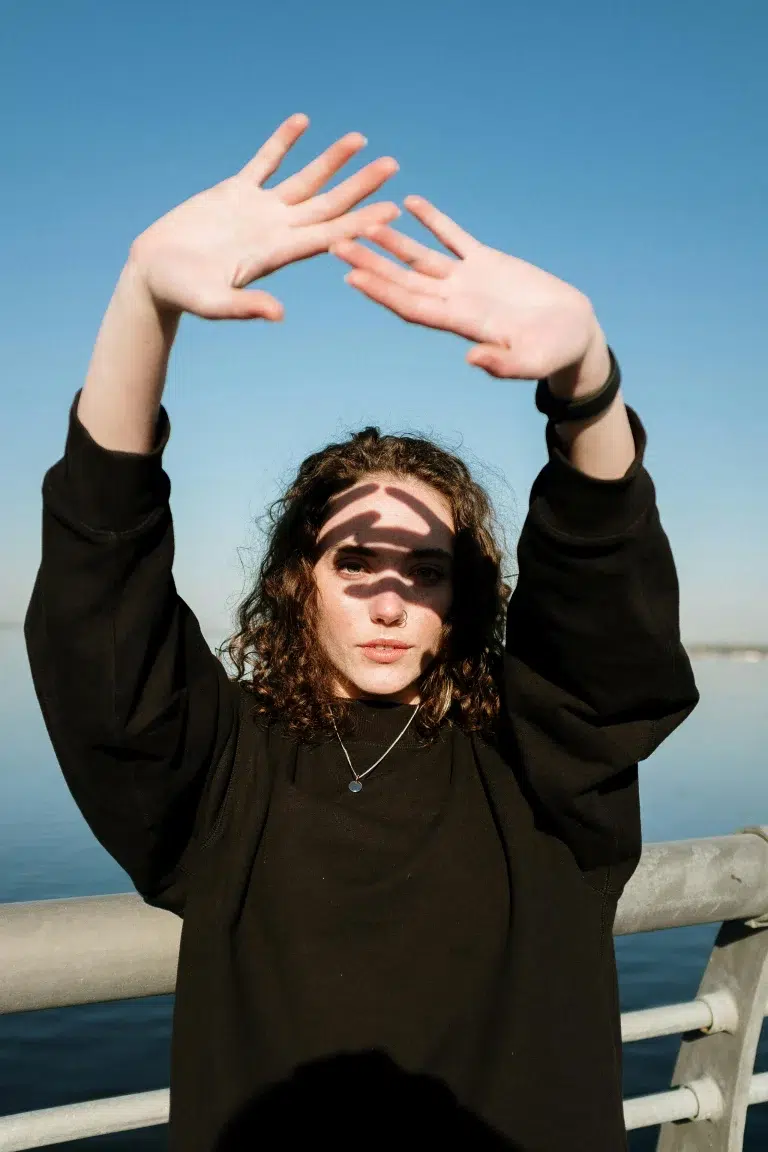

Pexels is often my first choice when it comes to free stock photos. The images are high quality, feel natural, and many capture real lifestyle moments.
I find that compared to other free platforms, Pexels offers some of the best image quality and one of the largest selections.
Style & aesthetic
- Large, diverse library
- Natural lighting
- Lifestyle-focused visuals
- Unposed, real moments
- Modern compositions
Licensing
- Free for personal and commercial use
- No attribution required (but appreciated)
- Be cautious with logos, recognisable people or locations as model or property releases are not guaranteed
Best for
- Modern, approachable brands
- Personal brands and service-based businesses
- Website imagery, blogs, social media, newsletters, etc.
Price
- Free (donation possible)
Why I like it
Pexels is one of the best free image libraries out there. Many photos tell real stories through movement, emotion, and small details—making them ideal for enhancing websites, blog articles, or social posts.
In addition, there is a growing video library, so you can keep your image style consistent across different formats.

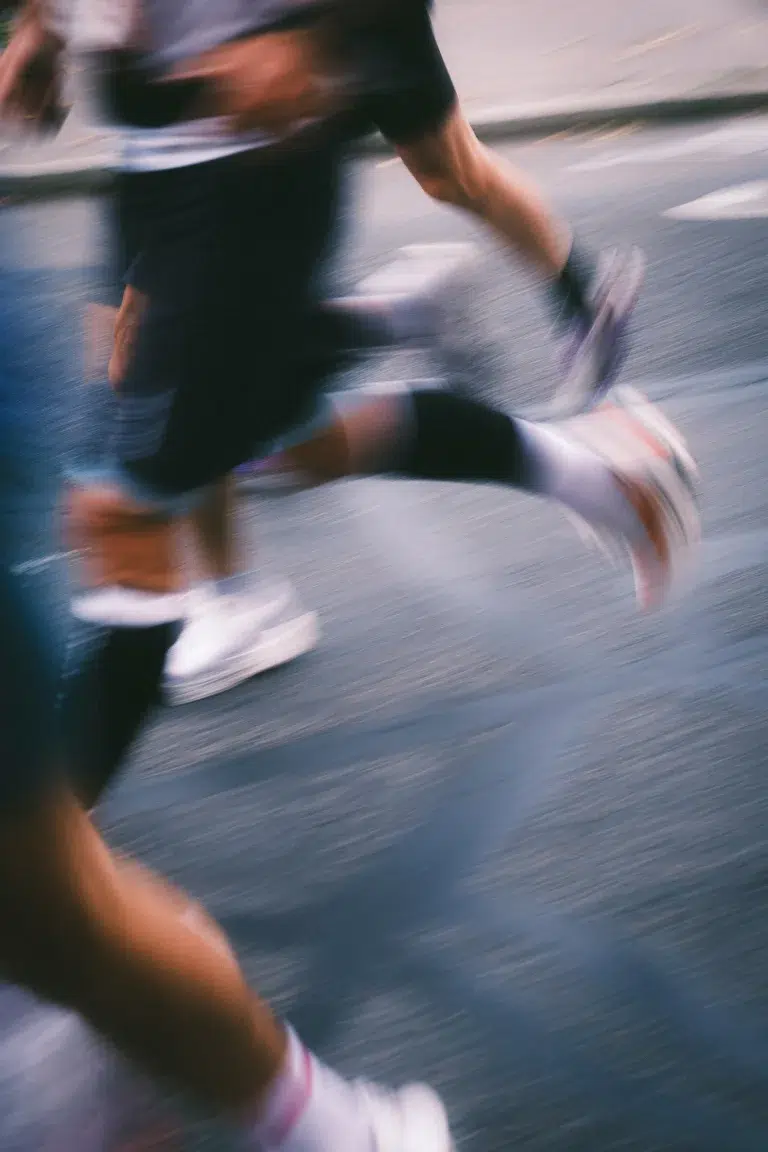
Unsplash is, alongside Pexels, one of the most well-known platforms for free stock photos. Many of the images are cleanly composed, modern, and shot in natural light, which makes them ideal for brands that value a clean and contemporary visual style.
Compared to other free platforms, Unsplash feels slightly more professional and curated. However, you sometimes need to search a little longer to find truly strong images. That’s why I often check Pexels first and then Unsplash.
A newer and promising addition is Unsplash+, a paid membership that offers premium-quality images and better licensing terms for brands.
Style & aesthetic
- Large image library
- Calm, atmospheric visuals
- Sometimes artistic and conceptual
- Strong compositions
- Natural light and minimal styling
Licensing
- Free for personal and commercial use
- No attribution required (but appreciated)
- Be careful with logos, recognisable people, or private locations – model or property releases are not guaranteed
- Unsplash+ includes stronger licensing protection and, in some cases, model and property releases
Best for
- Modern, minimalist brands
- Content creators and service businesses
- Websites, blogs, hero visuals, social media, etc.
Price
- Free image library
- Unsplash+ premium membership from around $4 USD per month
Why I like it
Unsplash offers similar advantages to Pexels, such as modern, high-quality images with free access.
While it doesn’t include videos, the search experience is one of the best. Thanks to strong search filters and curated topics, it’s easy to find images with the right mood for any brand project
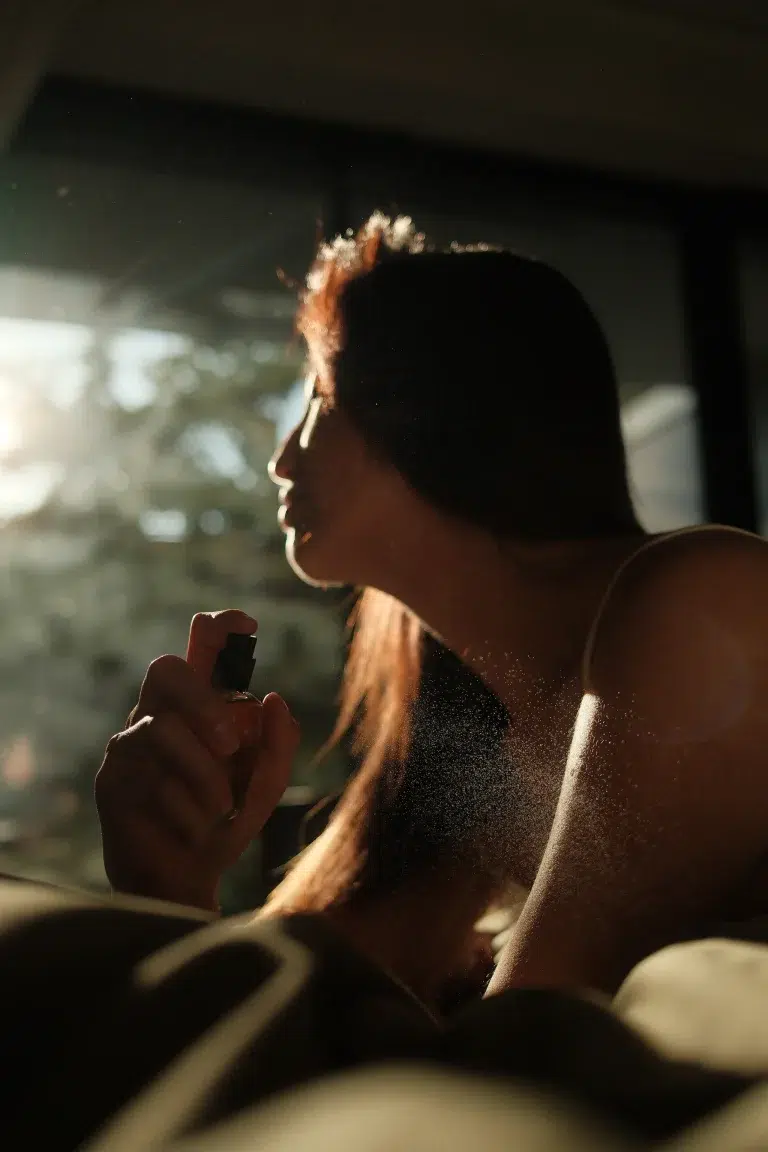

Kaboompics is another stock photo site. The image library is smaller than those of Pexels or Unsplash, but the photos are stylistically consistent and look high-quality throughout.
Many images are available as photo sets, meaning you get several shots from the same photoshoot. That’s perfect if you want to build a cohesive visual style across your brand.
Another good feature is the colour filter that lets you search by colour and instantly check whether images match your brand palette.
Style & aesthetic
- Soft, muted tones
- Modern, Scandinavian-inspired look
- Slightly feminine visual style
- Often available as photo sets
- Clean compositions
Licensing
- Free for commercial use
- No attribution required
- Avoid visible logos, recognisable products or faces to stay safe legally
Best for
- Lifestyle, interior, fashion and beauty brands
- Brands with a clean, elegant or soft aesthetic
- Blogs, Pinterest, social media, website visuals
Price
Free
Why I like it
The collection feels carefully curated and stylish. Even though everything is free, nothing looks like low-quality stock photography. The built-in colour filter is incredibly helpful—you can immediately see whether an image fits your brand colours.
I usually turn to Kaboompics when I want to create soft, elegant visual worlds that look premium even on a smaller budget.
4. Bendito Mockup
Bendito Mockup is best known for its premium mockups, but they now also offer stock photography. The library is still small, but the quality stands out immediately.
The collection feels curated and art-directed, with clean compositions and image sets that work beautifully for branding and design projects.
Right now, most of the content focuses on food and sports scenes, available both as clean background-friendly images and detailed close-up shots. This mix makes them ideal for layouts like websites, presentations or portfolios.
Style & aesthetic
- Minimal and elegant
- High-end editorial feel
- Calm, intentional compositions
- Great mix of backgrounds and detail shots
Licensing
- Commercial licences available
- Clear terms make it easy for designers and brands to use
- Extended licences available for larger projects
Best for
- Boutique design studios (portfolios)
- Premium and lifestyle brands
- High-quality websites, moodboards and brand presentations
Price
From $39 USD per image (depending on licence)
Cohesive image collections available
Why I like it
Bendito collaborates with skilled photographers; and it shows. The lighting, colour, and styling are consistently high-quality, giving any brand an instantly polished look.
Another bonus is that they offer beautiful background-style images, which are incredibly useful in branding but often hard to find.
Bendito is definitely a boutique alternative to overcrowded stock sites and one to watch as their library grows.
5. Stocksy
Stocksy is another excellent alternative to the typical overused stock photo sites.
The images are curated by professional photographers, which ensures consistently high quality. The photography focuses on natural light, real emotion, thoughtful composition and strong visual storytelling.
The library is large and versatile, covering everything from lifestyle and business to travel, wellness and creative conceptual imagery.
Style & aesthetic
- Authentic and artistic
- Emotional storytelling
- Partly documentary style
- Natural colours and rich textures
- Strong compositions, editorial feel
Licensing
- Royalty-free
- Clear commercial usage
- Model and property releases for most images
Best for
- Brands that want to communicate through storytelling
- Premium and boutique brands
- Lifestyle, wellness, travel, culture
- Sustainability and purpose-driven companies
- Editorial-style design, magazine layouts, campaigns
- Agencies and designers who need character-rich imagery
Price
From $35 USD per image (depending on size and usage)
Why I like it
Even though I haven’t personally used Stocksy yet, I recommend it to anyone looking for expressive, personality-driven images.
The search functionality is great—you can filter by skin tone, ethnicity, colour, mood or even perspective, and more.
Stocksy also offers video content, and the artists are paid fairly, which makes the platform even more appealing.
6. Death to Stock
Death to Stock has been around for a few years, and you can feel it in the quality of their visuals.
Their photos are full of personality and creativity without looking staged or overproduced. Instead of the typical stock aesthetic, you get cinematic lighting, raw emotion, and beautifully composed storytelling.
Many image collections are built around meaningful themes such as culture, identity, environment, or society.
In addition to portraits, you’ll find abstract imagery, textures, and artistic concepts. It’s a great choice if you’re building a brand that wants to make a statement rather than blend in.
Style & Aesthetic
- Raw, cinematic, atmospheric
- Artistic, sometimes experimental
- Strong storytelling visuals
- Sditorial rather than stock look
Licensing
Commercial use included
Typically includes model and property releases
Clear, easy-to-understand licence terms
Best for
- Bold, creative brands
- Design studios & agencies
- Storytelling campaigns
- Editorial branding, hero imagery, moodboards, etc.
Price
- Subscription from $19 per month
Why I like it
Death to Stock is anything but ordinary. Their images are expressive and emotionally engaging. They feel more like campaign or magazine photography than stock.
If your brand values originality and strong visual identity, this platform is worth exploring.
One thing to keep in mind though is that you need an active membership to use their content. Once you cancel, you lose the right to use most images. They do offer extended licences for individual photos so you can use them forever, but those are quite expensive. Personally, I haven’t used Death to Stock commercially yet for that reason.
That said, I still check in often as their imagery is really inspiring.
7. Editorial Stock Images
Editorial Stock Images is a smaller, curated platform with warm, authentic photography. The images feel personal and natural; almost like they were taken from a lifestyle feature rather than a stock library.
For brands that want to tell honest, human-centred stories, this site is a valuable resource.
The collection isn’t huge, but it’s stylistically very consistent. Expect natural light, organic colours, real locations, and a calm visual atmosphere.
Style & Aesthetic
- Warm, natural lighting
- Real people, real moments
- Organic compositions
- Soft colour palette with a cinematic feel
Licensing
- Commercial use allowed
- Check model and property releases for advertising use
Best for
- Value-driven brands
- Sustainability, NGOs, creative studios
- Brand storytelling, websites, campaigns, annual reports etc.
Price
- From $15 per image
- Membership from $49 per month
Why I like it
Editorial Stock Images strikes a beautiful balance. The photos aren’t overly polished, but they’re not gritty either.
They feel human and sincere, which makes them ideal for brands that communicate transparency, connection, or purpose.
There’s also video content available, which is perfect if you want to build a consistent visual narrative across different media.
8. Stills
Stills is one of the most artistic stock photo platforms on the market. Browsing through it feels less like scrolling a stock image library and more like exploring a curated photography archive or gallery.
The images are created by renowned photographers and artists, and the quality shows. You’ll find atmospheric lighting, strong emotions, striking compositions, and visual storytelling at a very high level.
Stills sits at the premium end of this list in terms of pricing—but it’s still more affordable than commissioning a photoshoot of comparable quality.
For brands that value aesthetics and emotional impact, this can be a worthwhile investment.
Style & Aesthetic
- Cinematic and atmospheric
rich textures and depth - Minimalist but emotionally powerful
- Artistic, editorial look
Licensing
Commercial use allowed
Always check rights for ads, campaigns, and wide distribution
Best for
- Premium lifestyle brands
- Creative studios and campaigns
- Campaigns, brand systems, hero visuals, etc.
Price
- Starting at $147 per image (depending on resolution)
Why I like it
Stills bridges the gap between traditional stock photography and fine art. Here you get original artwork from established photographers like &Walsh, Theo Gosselin, and Joe Pettet-Smith. These are the kinds of visuals you’d usually see in magazines, galleries, or high-end campaigns.
I haven’t used Stills myself yet because it’s a little expensive for most of my clients. But if you’re looking for unique, expressive image worlds that stand out from the crowd, this platform offers exceptional material.
Other stock photo sites worth exploring
I’ve focused on a selection of the best stock photo sites in this guide, but there are many more that are worth exploring—especially if you’re looking for a specific visual style or want to expand your image library.
- Mockup Maison: Originally known for its mockups, the platform now also offers curated photo collections. The style is modern, minimalist, and quite brand-friendly.
- iStock: A huge library with mixed quality. Useful if you already have a subscription. I use it for one client and find it solid, but not particularly unique.
- TONL, Nappy and CreateHER Stock: Platforms with culturally diverse photography and a strong focus on representation. Ideal if diversity and inclusion matter to your brand.
- Lummi: Pretty good quality AI-generated stock images. Great if you’re looking for something fresh or need visuals in very specific styles that are hard to find elsewhere.
- EyeEm: A community-driven marketplace with artistic images that often have a documentary feel. A good source for more authentic visuals beyond the typical stock look.
- Burst by Shopify: A free stock photo library created for small businesses and start-ups. Practical and versatile, although some images can feel a little generic.
- Rawpixel: A creative and versatile platform offering everything from contemporary lifestyle photography to vintage illustrations and design assets.
- Westend61: A premium European photo agency offering natural, high-quality lifestyle imagery. Their photos have a realistic yet polished feel and are perfect if you want your brand visuals to look relatable.
Wrapping up
Even with a small budget, stock photos don’t have to look generic or cheap. With the right sources and a clear visual strategy, you can build a professional and cohesive visual identity for your brand.
Here’s how to get started:
- Define your visual direction. Decide what visual style fits your brand. What mood do you want to create? What kind of light, colours and atmosphere reflect your positioning? This becomes your filter for selecting authentic stock photos.
- Choose the right sources. Use platforms that align with your style and values. Pick a few favourites and stick to them if possible. This helps you maintain consistency.
- Build your own image library. Save fitting images in themed folders or collections. This saves time for future projects and keeps your brand visuals consistent across your website, social media and marketing.
If you’d like help defining your photography style or building a consistent visual system for your brand, feel free to get in touch via my contact form. I’d be happy to help.
Title image by RF._.studio _ via Pexels
